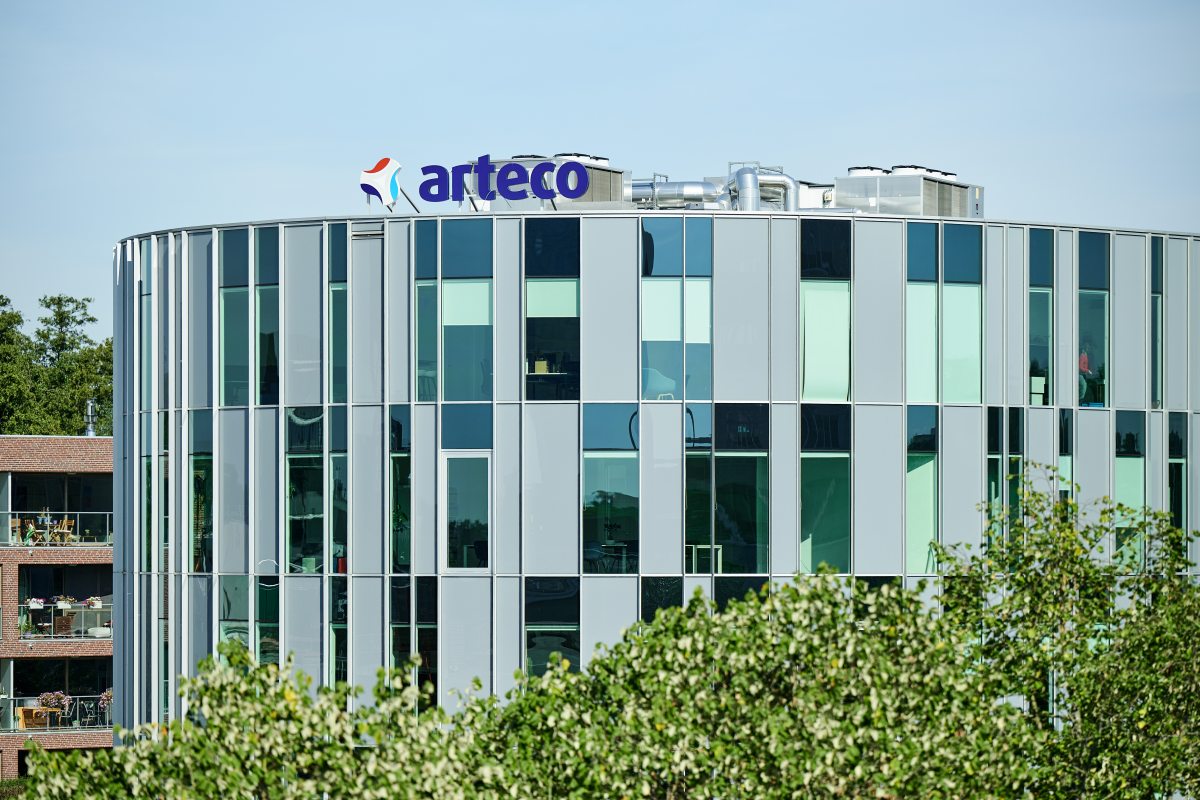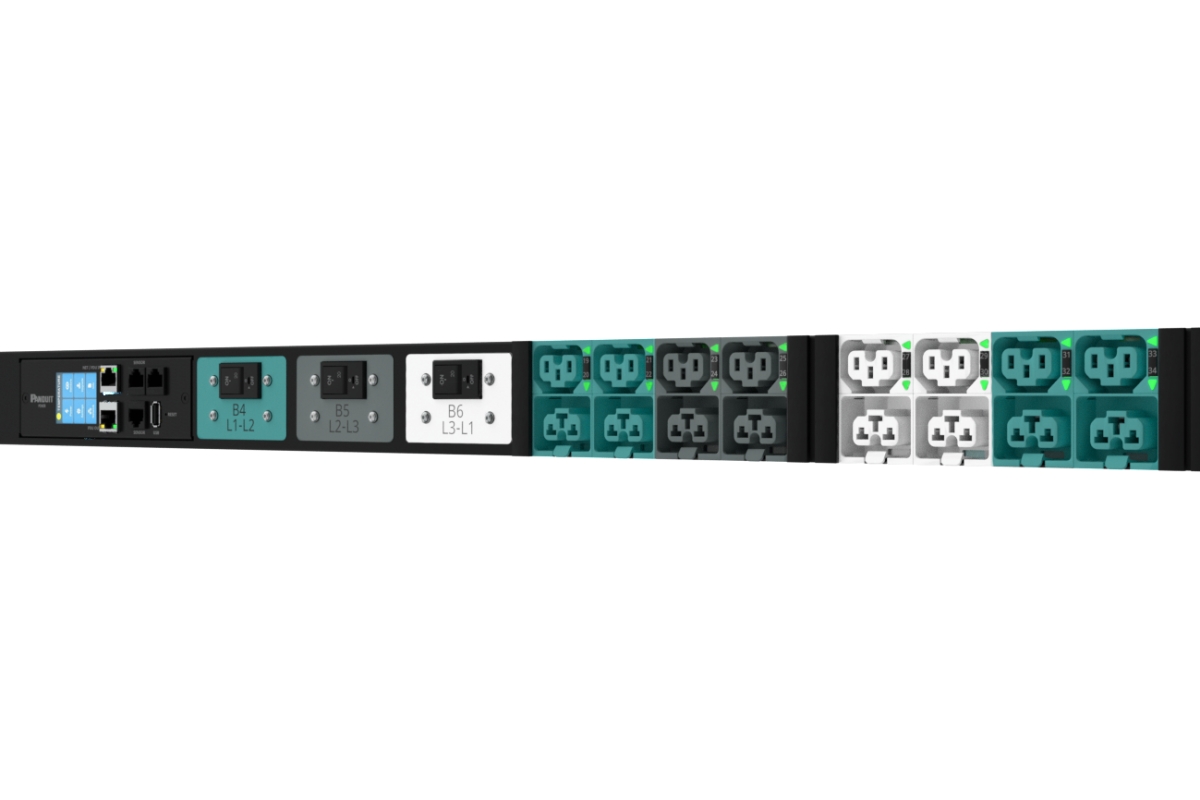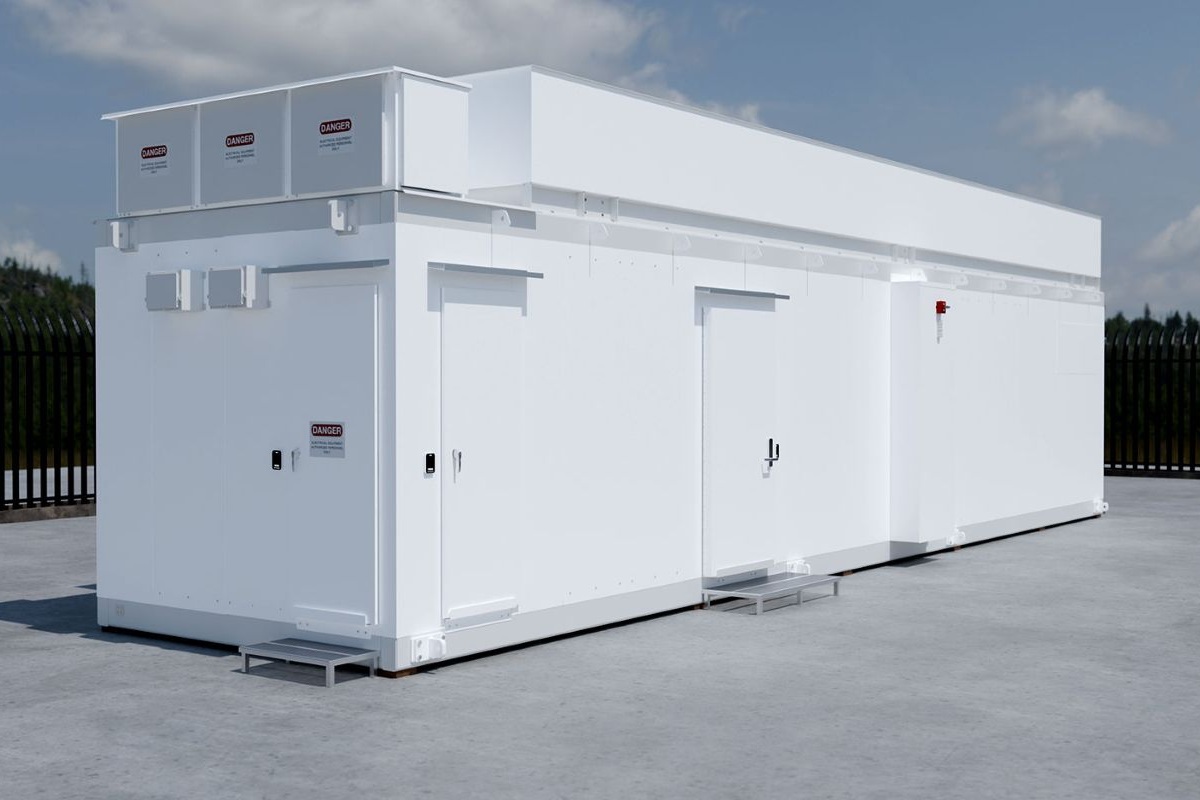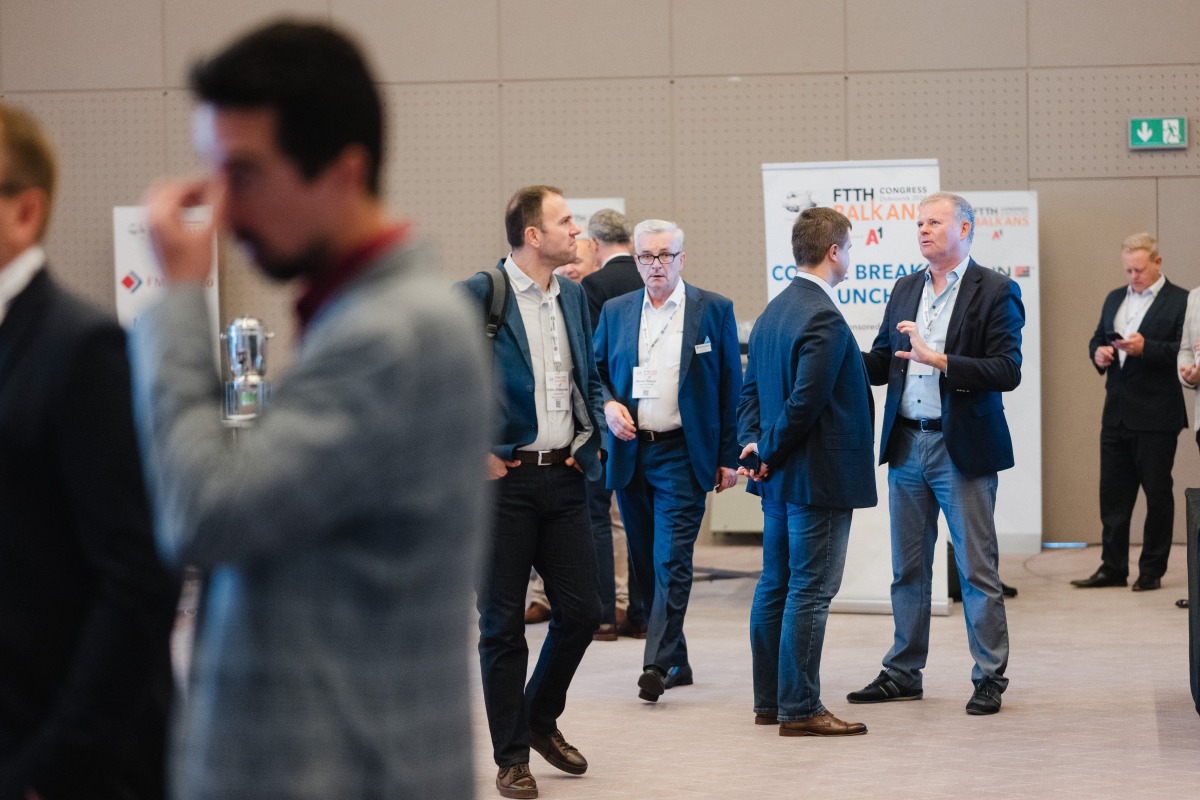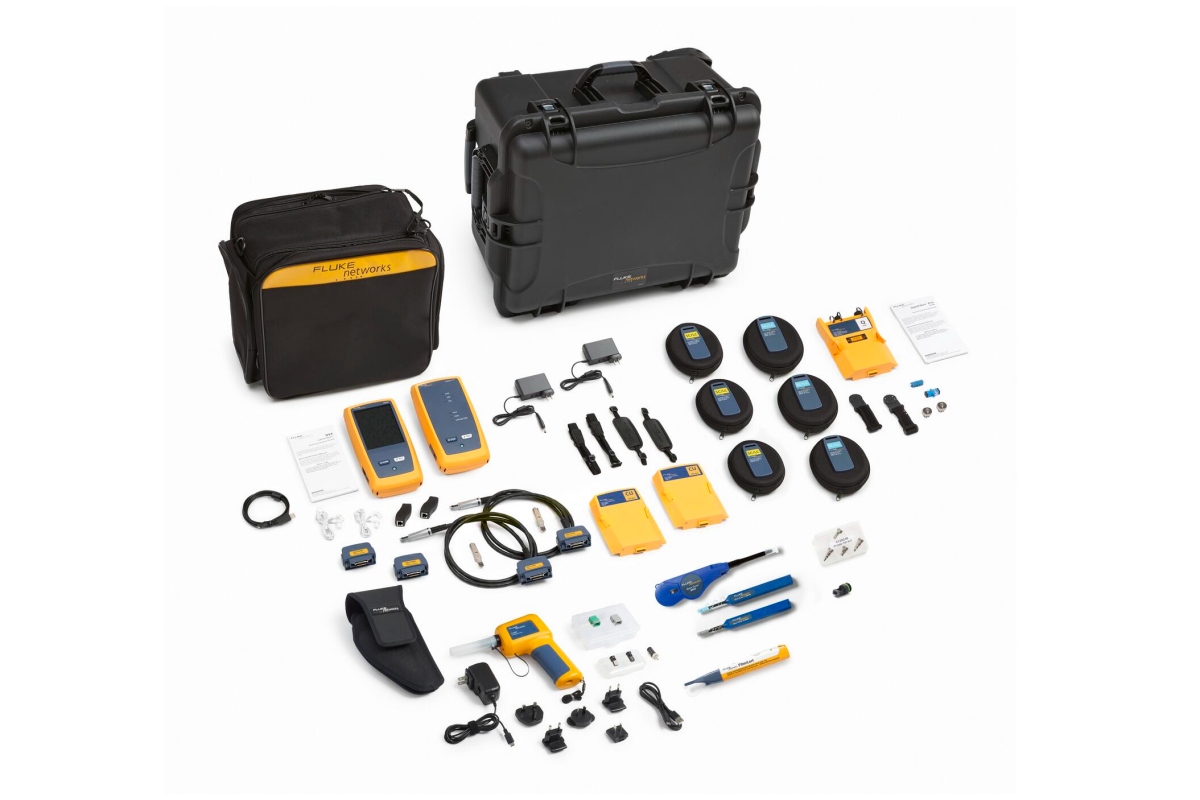Data Centre Infrastructure News & Trends
Data Centre Infrastructure News & Trends
Enterprise Network Infrastructure: Design, Performance & Security
Exclusive
Future-proofing network infrastructure
In this exclusive article for DCNN, Warren Aw, Chief Commercial Officer at Epsilon Telecommunications, highlights why agile, high-capacity connectivity is the critical ingredient for resilience in an era of relentless digital demand:
Colocation, connectivity, and continuity
In today’s digital landscape, business IT environments are becoming increasingly sophisticated and, with that, more complex. Whether it’s an enterprise working to stay ahead of increasingly digitally savvy consumers, or a service provider keeping those enterprise services and workloads up and running, network downtime is no longer an option.
Downtime is more than just an inconvenience; it’s a major threat to revenue and reputation. For 90% of mid-to-large-sized enterprises, just one hour offline can cost more than $300,000 (ITIC) (£221,000). Despite this, many businesses are still relying on infrastructure that wasn’t built for the scale, speed, or strain of today’s digital demands.
Whether the services are mission-critical or not, a bad online experience can make or break customer relationships in an instant. Customers now expect always-on availability for a wide range of services, such as streaming video content, collaborating in the workplace, performing financial transactions, or accessing cloud services. Business continuity was once a contingency plan, but it has now become a competitive advantage.
That being said, ensuring continuity is also becoming more difficult due to growing data volumes, AI workloads, rising user expectations, and a more distributed business application ecosystem. This, coupled with real-world constraints like power limitations, infrastructure strain, and inconsistent SLAs, is making it more important than ever for businesses to re-evaluate their network and business continuity strategies to stay resilient, particularly if legacy infrastructure is still in play.
Colocation, when combined with agile, high-capacity connectivity, can provide a simpler, smarter way for businesses to keep service access and delivery both online and ahead in a competitive market. Colocation really is more than just racks and servers; it’s an opportunity to future-proof network infrastructure with adaptability, scalability, and reliability at the core.
Legacy infrastructure limitations
As businesses deploy more data-intensive applications, compact edge computing devices, and AI workloads, rising demands are putting increased strain on legacy infrastructure and on-premises environments. This includes:
• Power constraints – Modern applications require newer, high-density equipment, which significantly increases power requirements.• Downtime risks – Legacy infrastructure and single points of failure raise the likelihood of outages, damaging SLAs, revenue, and brand reputation.• Business continuity gaps – Without resilient infrastructure and built-in redundancy, organisations face growing challenges in maintaining always-on availability.• Scalability challenges – On-premises infrastructure can be slow and expensive to scale in response to customer demands or new market opportunities.• High costs – Cooling, power, staffing, and maintenance are stretching budgets and internal team resources.• Inter-provider complexity – Managing connectivity across multiple clouds, partners, and carriers is complex, time-consuming, and prone to performance issues without the right interconnect fabric.
These limitations are pushing IT leaders to look for modern, flexible infrastructure strategies that can grow with their business.
Colocation for business continuity
Colocation is more than just renting space in a data centre; it’s a strategic way to strengthen business continuity while simplifying IT infrastructure. Instead of maintaining costly on-premises facilities, organisations can host critical infrastructure in purpose-built, third-party data centres.
This shift not only reduces capital expenditure, but also enables teams to focus on innovation rather than infrastructure. Colocation provides robust power, security, and carrier-neutral connectivity to a global network ecosystem designed to prioritise uptime, resilience, and reach.
One of the key advantages of colocation is dual-site access, which allows businesses to distribute their infrastructure across two geographically separate, interconnected facilities. This setup is vital for disaster recovery and redundancy planning. If one site experiences a disruption – whether due to a power failure, natural disaster, or hardware issue – traffic and workloads can seamlessly fail over to the second site, minimising downtime and ensuring uninterrupted service delivery.
Colocation also supports business continuity by offering high-speed, low-latency connectivity to clouds, carriers, and partners. On top of this, it offers physical security and environmental controls that exceed most in-house capabilities, as well as power and cooling infrastructure designed for high-density, mission-critical workloads.
Beyond continuity, it brings cost-efficiency, operational simplicity, and access to a broader ecosystem of services. Colocation enables enterprises and service providers to focus on delivering value, rather than managing infrastructure.
Mitigating risk, maximising uptime
With increasingly complex IT environments and 24/7 availability becoming the new norm, having the right infrastructure in place is crucial. Colocation offers a practical, scalable way to support business continuity, reduce risk, and stay flexible in a changing landscape.
Epsilon offers colocation services across key hubs in London, Singapore, New York, and South Korea. Each facility provides 99.999% uptime and robust power backup, as well as direct access to our global network fabric of over 500 data centres, clouds, and internet exchanges via our NaaS platform, Infiny.
By future-proofing network infrastructure, colocation can maximise uptime, improve customer experiences, and build new competitive advantages that can support long-term business goals.
Ultimately, colocation provides the stable foundation that organisations need to safeguard operations in an unpredictable world. Business continuity is no longer a backup plan; it’s a competitive differentiator.
For more from Epsilon, click here.
Joe Peck - 30 September 2025
Data Centre Infrastructure News & Trends
Enterprise Network Infrastructure: Design, Performance & Security
News
STL showcases multi-core fibre at Connected Britain
STL, an optical and digital systems company, has demonstrated its Unitube Single Jacket Indoor Optical Fibre Cable with four-core multi-core fibre (MCF) at Connected Britain 2025.
The technology places four cores within the same cladding diameter as standard single-mode fibre, maintaining a coating size of 250/200 micrometres.
STL is among the first companies to show real-world deployments of MCF technology, with use cases spanning underground and duct networks. Building on this work, the new cable has been designed specifically for indoor environments such as data centres, campus networks, and commercial buildings.
Fire safety and performance features
The cable is certified under the Construction Products Regulation (CPR) EuroClass Cca-s2, d1, a1 standard, providing a high level of fire resistance for critical infrastructure.
STL has also developed optical distribution units and connectivity solutions to complement the product, aiming to simplify integration into existing network architectures.
Key features of the indoor cable include:
• Enhanced security — support for quantum key distribution (QKD) to enable tamper-evident encryption• Future-ready bandwidth — four times the throughput of legacy fibres, supporting applications such as AI, 5G, and quantum technologies• Compact design — higher fibre counts within a smaller footprint, with examples including 864 fibres scaled to 3,456 using MCF• Scalability — a single deployment providing higher backbone capacity for long-term use
Dr Badri Gomatam, CTO at STL, comments, “Through continuous innovation and global partnerships, STL is accelerating the adoption of advanced optical technologies.
"Our Unitube Single Jacket Indoor Optical Fibre Cable with MCF is engineered to meet the growing demands of high-capacity, secure, and future-ready networks.
"With our ongoing global standardisation efforts and real-world deployments, we are proud to lead the evolution of optical infrastructure that powers next-generation applications.”
Joe Peck - 29 September 2025
Data Centre Infrastructure News & Trends
Innovations in Data Center Power and Cooling Solutions
Liquid Cooling Technologies Driving Data Centre Efficiency
Products
Arteco introduces ECO coolants for data centres
Arteco, a Belgian manufacturer of heat transfer fluids and direct-to-chip coolants, has expanded its coolant portfolio with the launch of ECO versions of its ZITREC EC product line, designed for direct-to-chip liquid cooling in data centres.
Each product is manufactured using renewable or recycled feedstocks with the aim of delivering a significantly reduced product carbon footprint compared with fossil-based equivalents, while maintaining the same thermal performance and reliability.
Addressing growing thermal challenges
As demand for high-performance computing rises, driven by artificial intelligence (AI) and other workloads, operators face increasing challenges in managing heat loads efficiently.
Arteco’s ZITREC EC line was developed to support liquid cooling systems in data centres, enabling high thermal performance and energy efficiency.
The new ECO version incorporates base fluids, Propylene Glycol (PG) or Ethylene Glycol (EG), sourced from certified renewable or recycled materials. By moving away from virgin fossil-based resources, ECO products aim to help customers reduce scope 3 emissions without compromising quality.
Serge Lievens, Technology Manager at Arteco, says, “Our comprehensive life cycle assessment studies show that the biggest environmental impact of our coolants comes from fossil-based raw materials at the start of the value chain.
"By rethinking those building blocks and incorporating renewable and/or recycled raw materials, we are able to offer products with significantly lower climate impact, without compromising on high quality and performance standards.”
Certification and traceability
Arteco’s ECO coolants use a mass balance approach, ensuring that renewable and recycled feedstocks are integrated into production while maintaining full traceability. The process is certified under the International Sustainability and Carbon Certification (ISCC) PLUS standard.
Alexandre Moireau, General Manager at Arteco, says, “At Arteco, we firmly believe the future of cooling must be sustainable. Our sustainability strategy focuses on climate action, smart use of resources, and care for people and communities.
"This new family of ECO coolants is a natural extension of that commitment. Sustainability for us is a continuous journey, one where we keep researching, innovating, and collaborating to create better, cleaner cooling solutions.”
For more from Arteco, click here.
Joe Peck - 26 September 2025
Data Centre Infrastructure News & Trends
Enterprise Network Infrastructure: Design, Performance & Security
Products
ProLabs expands 100G DCO transceiver range to 80km
ProLabs, a provider of optical connectivity and networking equipment, has launched an expanded QSFP28 100G digital coherent optics (DCO) transceiver family capable of extending network reach to 80 kilometres - up to twice the distance of typical transceivers.
The development comes as the UK, the world’s third-largest data centre market, faces increasing demand from AI and other emerging technologies.
By using ProLabs’ 100G DCO transceivers, the company says operators can connect data centres over longer distances without the need for repeaters, reducing infrastructure costs and freeing up resources for other areas of the network.
Reducing equipment and energy demand
According to ProLabs, the new range reduces reliance on intermediate points of presence (PoPs) and reconfigurable optical add-drop multiplexers (ROADMs), cutting the amount of equipment required.
Sam Walker, Vice President of Sales EMEAI at ProLabs, comments, “We are delighted to have launched our expanded range of DCO transceivers complementing our existing 400G ZR+ ahead of Connected Britain.
"Our transceivers will enable operators to improve their networks, reducing the number of active elements within the optical path. Not only does this reduce avoidable overheads, but it also helps address the growing demand for high-capacity, low-latency connectivity.”
The range is available in two variants: a standard power version for -10 dBm requirements and a high-transmit version for specific applications.
Options include ITEMP, ITEMP AutoTune, and CTEMP AutoTune, with a CMIS version due to be launched shortly. These features allow operators to automatically select the required wavelength once installed, aiming to support faster and more flexible integration.
Sam continues, “Another issue facing operators is power consumption. AI data centres require far more processing power than traditional facilities, and energy is costly.
"However, less network infrastructure means less power is required, so the use of our 100G DCO transceivers means operators can free up essential resources that may have been tied to power consumption.”
The ProLabs family of 100G DCO transceivers will be available for the first time at Connected Britain in London (24-25 September) at Stand 258.
For more from ProLabs, click here.
Joe Peck - 23 September 2025
Data Centre Business News and Industry Trends
Data Centre Infrastructure News & Trends
Enterprise Network Infrastructure: Design, Performance & Security
Insights into Data Centre Investment & Market Growth
Ciena to acquire Nubis Communications in $270m deal
Ciena, an American networking systems and software company, has announced an agreement to acquire Nubis Communications, a privately held company based in New Providence, New Jersey, USA, in an all-cash transaction valued at $270 million (£199 million).
Nubis specialises in high-performance, low-power optical and electrical interconnects designed to support artificial intelligence (AI) workloads. The acquisition is hoped to strengthen Ciena’s data centre strategy by adding new technologies and expanding its engineering expertise.
Expanding data centre interconnect capabilities
Nubis’ technology is focused on increasing scale and density inside the data centre to handle growing AI traffic. Its portfolio includes:
• Co-Packaged Optics (CPO) and Near Packaged Optics (NPO) — high-density optical modules capable of 6.4 Tb/s full-duplex bandwidth, optimised for low-latency, low-power operation. Combined with Ciena’s SerDes, these engines enable advanced interconnects for rack-to-rack and in-rack connectivity.
• Electrical Active Copper Cables (ACC) — analogue electronics that extend copper connectivity up to 4 metres at 200 Gb/s per lane, offering a low-power, low-latency alternative to traditional copper or DSP-based approaches.
In addition, more than 50 Nubis engineers will join Ciena’s research and development team, strengthening its technical capabilities inside the data centre.
David Rothenstein, Chief Strategy Officer at Ciena, says, “The acquisition of Nubis represents a significant step forward in Ciena’s strategy to address the rapidly growing demand for scalable, high-performance connectivity inside the data centre, driven by the explosive growth of AI-related traffic.
"With ownership of these key technologies for a wider range of use cases inside the data centre, we are expanding our competitive advantage by advancing development of differentiated solutions, reducing development costs, and driving long-term efficiency and profitability.”
Dan Harding, CEO of Nubis, adds, “The Nubis team is thrilled to join Ciena and enhance its portfolio with our interconnect technologies. Together, we will advance Ciena's data centre strategy by delivering reliable and high-performance solutions to support the next generation of AI workloads.”
Transaction details
The acquisition has been approved by the boards of both companies and Nubis shareholders. It includes customary purchase price adjustments for cash, debt, and working capital, along with employee retention arrangements.
The deal is expected to close during Ciena’s fiscal fourth quarter of 2025, subject to standard closing conditions.
For more from Ciena, click here.
Joe Peck - 23 September 2025
Data Centre Infrastructure News & Trends
Innovations in Data Center Power and Cooling Solutions
News
Products
Panduit launches EL2P intelligent PDU
Panduit, a manufacturer of electrical and network infrastructure solutions, has introduced the EL2P Intelligent Power Distribution Unit (iPDU), designed to improve power management in mission-critical data centre environments.
With rising rack power densities driven by artificial intelligence (AI) workloads and broader digital transformation, the EL2P series provides data centre operators with tools to maintain uptime, optimise capacity, and support sustainability goals.
Key aspects of the product include metering accuracy of ±0.5%, advanced cybersecurity, flexible outlet configurations, and integrated environmental sensing.
Features and capabilities
The EL2P iPDU includes an integrated colour touchscreen with an automatic interface rotation for different installation orientations, intended to improve usability for technicians.
Its hot-swappable controller and display module allow servicing or upgrades without interrupting power, reducing downtime risks.
The outlets are designed to provide flexibility by supporting multiple configurations (C13, C15, C19, or C21) within a single unit.
The iPDU also supports extended operating temperatures up to 60°C, making it suitable for high-density racks and constrained edge environments.
Cybersecurity is addressed with compliance to UL 2900-1 and IEC 62443-4-2 standards, secure code signing, 802.1x authentication, and a USGv6-certified IPv6 stack.
Additional functions include:
• Dual 1Gb Ethernet with daisy-chain capability – enabling up to 64 iPDUs to share one IP address and switch port• Native Cisco Nexus Dashboard integration – providing energy and sustainability insights without external hardware• Secure Zero Touch Provisioning (sZTP) – for faster configuration and scalable deployment• Redfish and RESTful API integration – ensuring compatibility with DCIM and cloud platforms
Available in single- and three-phase models, the EL2P series offers input capacities from 5kVA to 43.5kVA and comes with dual-rated approvals for both North America and EMEA.
Martin Kandziora, Senior Marketing Manager EMEA at Panduit, says, “The EL2P is a direct response to our customers’ demand for intelligent power management that simplifies installation, enhances security, and provides the granular visibility needed to future-proof operations.
"It combines cutting-edge features like hot-swappable controllers, dual 1Gb Ethernet, and best-in-class metering accuracy in a single platform.”
Panduit says the EL2P series is designed for colocation providers requiring tenant-level billing, hyperscale and cloud operators demanding high-density outlet configurations, and enterprises seeking scalable and secure power distribution.
For more from Panduit, click here.
Joe Peck - 18 September 2025
Data Centre Infrastructure News & Trends
Data Centres
News
CDM unveils DC platforms for the AI era
Compu Dynamics Modular (CDM), an AI-era modular data centre solutions company drawing on Compu Dynamics’ two decades of comprehensive data centre expertise, has launched two modular data centre solutions engineered to overcome the toughest data centre bottlenecks: ultra-high density, rapid deployment, and seamless scaling across edge to core. The CDM L Series is purpose built and optimised for AI learning/training and ultra-high-density workloads, and the CDM I Series is an all-in-one solution designed for AI inference at the edge.
Ron Mann, Vice President of Compu Dynamics Modular, comments, “With AI pushing traditional infrastructure limits and no end in sight, we’ve developed two unique, purpose-built modular data centre solutions for learning, inference, and edge. Designed for efficiency and flexibility, these solutions ensure our customers never have to compromise. CDM is redefining the possibilities of modular data centres, and our products are built to handle the requirements of tomorrow’s landscape.”
As AI workloads grow exponentially, CDM believes that traditional data centres are increasingly falling short in terms of meeting speed, density, and flexibility requirements. CDM’s two new platforms will address this challenge by offering customers solutions for both AI and edge workloads, which demand different densities, scales, and deployment models.
“These innovative new platforms are the result of 20-plus years of expertise in data centre design and deployment,” states Steve Altizer, President and CEO of Compu Dynamics. “The Compu Dynamics Modular team has created two much-needed solutions that are built to grow and evolve with the applications they support.”
Features of the CDM L Series include:• Purpose built and optimized for ultra-high density AI workloads• Engineered for 50–250+ kW per rack• Scalable from 1.5 to 3+ MW• Dual-module architecture, delivering powerful performance for next-generation AI applications• Ideal for hyperscale, colocation, and GPU-intensive environments• Designed and built in the USA• Customisable base module and open OEM integration
Features of the CDM I Series include:
• Designed for edge deployments requiring fewer AI racks, or lower IT density per module• Engineered for 50–250+ kW per rack• Supports up to 500 kW per module with air cooling and 1+ MW with combined air and liquid cooling• Compact, all-in-one architecture to reduce space, streamline deployment and reduce complexity• Ideal for telecom, healthcare, education, and government sectors• Designed and built in the USA• Customisable base module and open OEM integration
Both platforms also offer fast, flexible deployment and seamless scalability, as well as being technology neutral, supporting multiple IT hardware and infrastructure OEM equipment sources with no vendor lock-in. CDM provides full-service, end-to-end support for these platforms, from evaluation to delivery and ongoing preventive maintenance. The company’s turnkey and vendor-neutral approach to modular solutions accelerates deployment while reducing costs. With this launch, CDM says that it is empowering customers to face the AI era fully prepared and confident in the company's infrastructure.
For more from Compu Dynamics Modular, click here.
Simon Rowley - 17 September 2025
Data Centre Infrastructure News & Trends
Enterprise Network Infrastructure: Design, Performance & Security
Events
News
FTTH Congress CEE 2025 to focus on fibre rollout
The FTTH Congress CEE 2025 will take place on 7–8 October at the DoubleTree by Hilton in Warsaw, Poland, bringing together policymakers, operators, investors, and technology providers to address fibre deployment challenges and opportunities across Central and Eastern Europe (CEE).
The two-day event, organised by the FTTH Council Europe, is expected to draw more than 400 delegates from across the region’s broadband ecosystem.
Fibre challenges and opportunities in CEE
According to the latest FTTH/B Market Panorama, the CEE region still has more than 13 million homes without fibre access, with rural areas presenting the largest gaps.
While markets such as Poland and Romania have seen rapid deployment, others - including Czechia and parts of the Baltics - continue to face regulatory and investment obstacles.
Vincent Garnier, Director General of the FTTH Council Europe, says, “Central and Eastern Europe represents both one of the continent’s biggest fibre challenges and one of its greatest opportunities.
"With millions of homes still unconnected, this Congress is about ensuring that ambition translates into action by bringing together the actors who can make fibre a reality across the region.”
Programme highlights
The programme includes keynote sessions, technical presentations, and national market debates, with participation from the European Commission, BEREC, national regulators, operators, infrastructure investors, and vendors.
Key themes will cover:
• Regulatory frameworks and funding to accelerate deployment• Investment models and cross-border partnerships• Innovations in network resilience and open access models• The role of fibre in smart cities, inclusive growth, and digital sovereignty
Country-focused sessions will provide insight into fibre developments in Poland, Czechia, Romania, Ukraine, and the Baltics.
Francesco Nonno, President of the FTTH Council Europe, adds, “This event is a unique chance to address the strategic dimension of fibre. Beyond infrastructure, it is about enabling digital competitiveness, sustainability, and resilience.
"The Congress in Warsaw will highlight how national and European priorities can come together to deliver for citizens and businesses alike.”
Joe Peck - 15 September 2025
Data Centre Infrastructure News & Trends
Enterprise Network Infrastructure: Design, Performance & Security
Products
Fluke launches DC kits to reduce fibre failures
Fluke Networks, a manufacturer of network certification and troubleshooting tools, has introduced a set of Versiv Data Center Kits designed to help technicians and engineers prevent copper and fibre connectivity issues, as well as troubleshoot them more efficiently.
The launch comes as global demand for data centre capacity continues to rise, driven by artificial intelligence (AI), cloud computing, and hyperscale facilities. With increasing density in fibre connections, contamination and testing challenges are becoming more significant risks to uptime.
Kits for fibre inspection and troubleshooting
The new kits include:
• Fibre and Copper Commissioning and Troubleshooting Kit – for verifying and optimising networks throughout a data centre’s lifecycle, from commissioning to upgrades and troubleshooting
• Fibre Inspection Kit – aimed at reducing failures by addressing end-face contamination, a leading cause of fibre performance issues
• MPO Maintenance and Troubleshooting Kit – designed to speed up multi-fibre trunk testing by up to 80% with single-button operation
Alongside the kits, Fluke is also releasing accessories that support Very Small Form Factor (VSFF) connectors, which enable higher connection density.
These accessories allow users of the CertiFiber Pro Optical Loss Test Set to apply the recommended single-jumper reference method for testing MDC connections, as well as inspect and clean MMC, MDC, and SN connectors.
Nigel Hedges, Application and Technical Specialist at Fluke Networks, says, “With over 9,000 data centres worldwide, and AI, cloud, and hyperscale technologies driving explosive growth, infrastructure teams are under unprecedented pressure.
"The new Versiv Data Center Kits are designed to help technicians and engineers meet that challenge head-on - equipping them with tools to prevent failures, speed up troubleshooting, and ensure high-density fibre connections are clean, tested, and reliable.”
Fluke Networks says the kits are intended to support teams working in hyperscale and enterprise environments, where the margin for error is minimal and preventative maintenance is essential to maintaining resilience.
Joe Peck - 10 September 2025
Data Centre Infrastructure News & Trends
Innovations in Data Center Power and Cooling Solutions
Liquid Cooling Technologies Driving Data Centre Efficiency
GF partners with NTT Facilities on sustainable cooling
GF, a provider of piping systems for data centre cooling systems, has announced a collaboration with NTT Facilities in Japan to support the development of sustainable cooling technologies for data centres.
The partnership involves GF supplying pre-insulated piping for the 'Products Engineering Hub for Data Center Cooling', a testbed and demonstration site operated by NTT Facilities.
The hub opened in April 2025 and is designed to accelerate the move from traditional chiller-based systems to alternatives such as direct liquid cooling.
Focus on energy-efficient cooling
GF is providing its pre-insulated piping for the facility’s water loop. The system is designed to support efficient thermal management, reduce energy losses, and protect against corrosion. GF’s offering covers cooling infrastructure from the facility level through to rack-level systems.
Wolfgang Dornfeld, President Business Unit APAC at GF, says, “Our partnership with NTT Facilities reflects our commitment to working side by side with customers to build smarter, more sustainable data centre infrastructure.
"Cooling is a critical factor in AI-ready data centres, and our polymer-based systems ensure performance, reliability, and energy efficiency exactly where it matters most.”
While the current project focuses on water transport within the facility, GF says it also offers a wider range of polymer-based systems for cooling networks. The company notes that these systems are designed to help improve uptime, increase reliability, and support sustainability targets.
For more from GF, click here.
Joe Peck - 10 September 2025

Head office & Accounts:
Suite 14, 6-8 Revenge Road, Lordswood
Kent ME5 8UD
T: +44 (0)1634 673163
F: +44 (0)1634 673173


